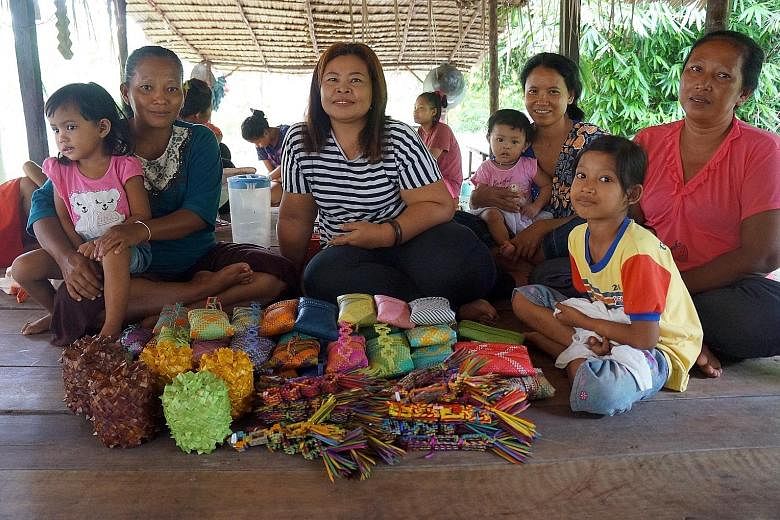CAREY ISLAND (Selangor) • It was like a women's coffee meet-up, with children running about as their mothers chatted over sweet tea and biscuits in an airy wooden pavilion decorated with woven leaves. In front of them was a peacock array of woven leaf pouches, baskets and bookmarks in brilliant pinks, blues and greens.
The women had brought these crafts to Ms Reita Rahim, who runs the Gerai Orang Asal, Malay for stall of the indigenous people.
Ms Reita sells them at pop-up fairs around Kuala Lumpur and returns all proceeds to the artisans.
The women are weavers from the Tompoq Topoh collective, set up in 2003 by the Mah Meri people of Carey Island, about 70km from Kuala Lumpur. The Mah Meri is an indigenous ethnic group whose men and women are skilled in craftwork. Modern life has been difficult for them, with the increasing need for money to buy the necessities that they once obtained for free from nature.
Selling handicrafts helps supplement their income, in particular for the women who set up this collective to upgrade their skills and market their crafts.
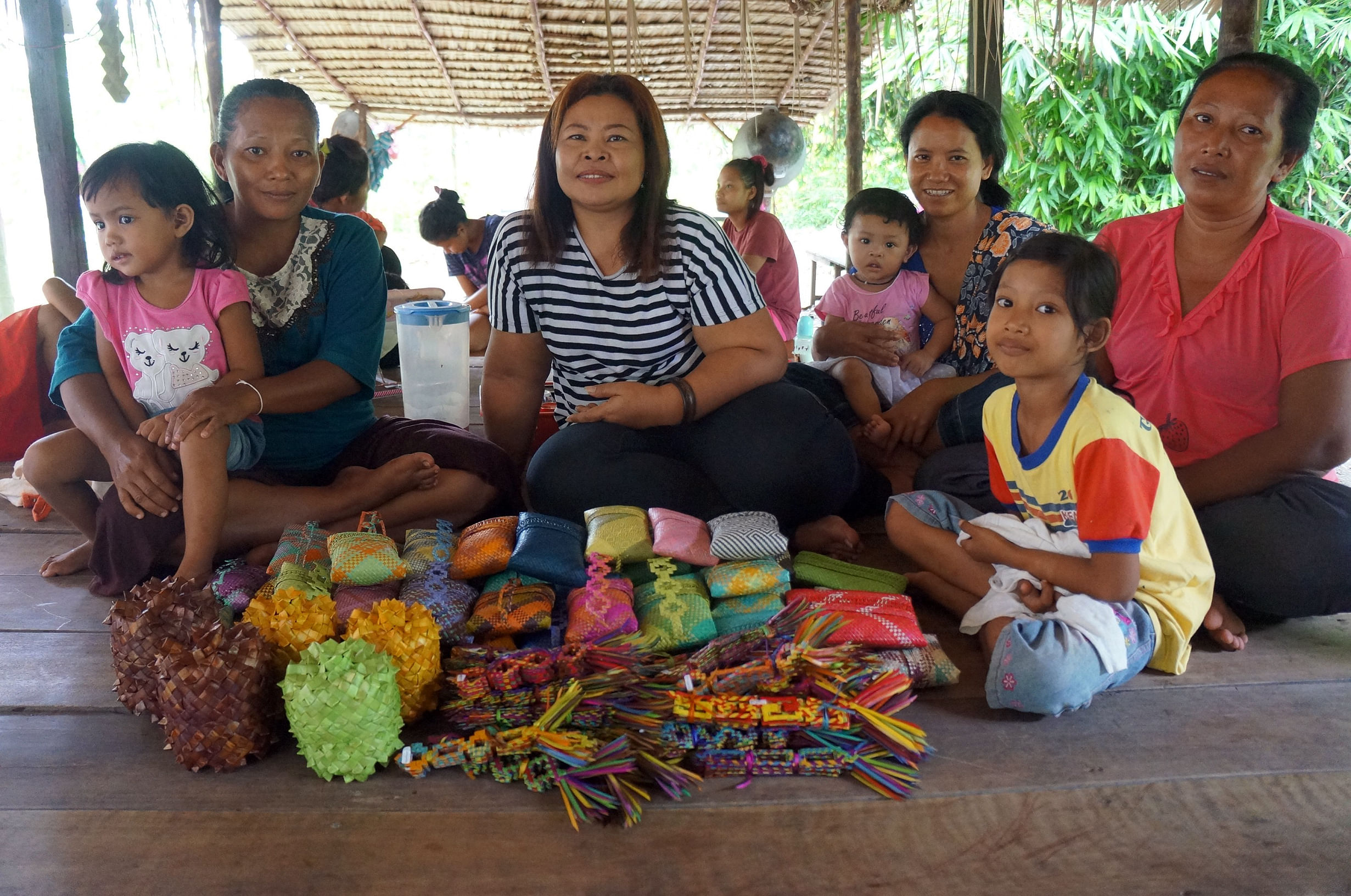
A weaver, Ms Maznah anak Unyan, 48, said they had always woven mats, pouches and baskets but these were often roughly made as they were meant for domestic use. Having since upgraded their skills, the 20-plus women in the collective are now considered among the finest basket weavers in Malaysia.
From merely repeating old designs, the Mah Meri women now also create new patterns to which they give quirky names such as durian weave or mosquito coil weave. Most of them now earn about RM200 (S$67) a month from crafts. Ms Fauziah Husin, 46, said she used to earn about RM40 a month selling brooms made from palm fronds, but now her pouches and bookmarks bring in more than RM100.
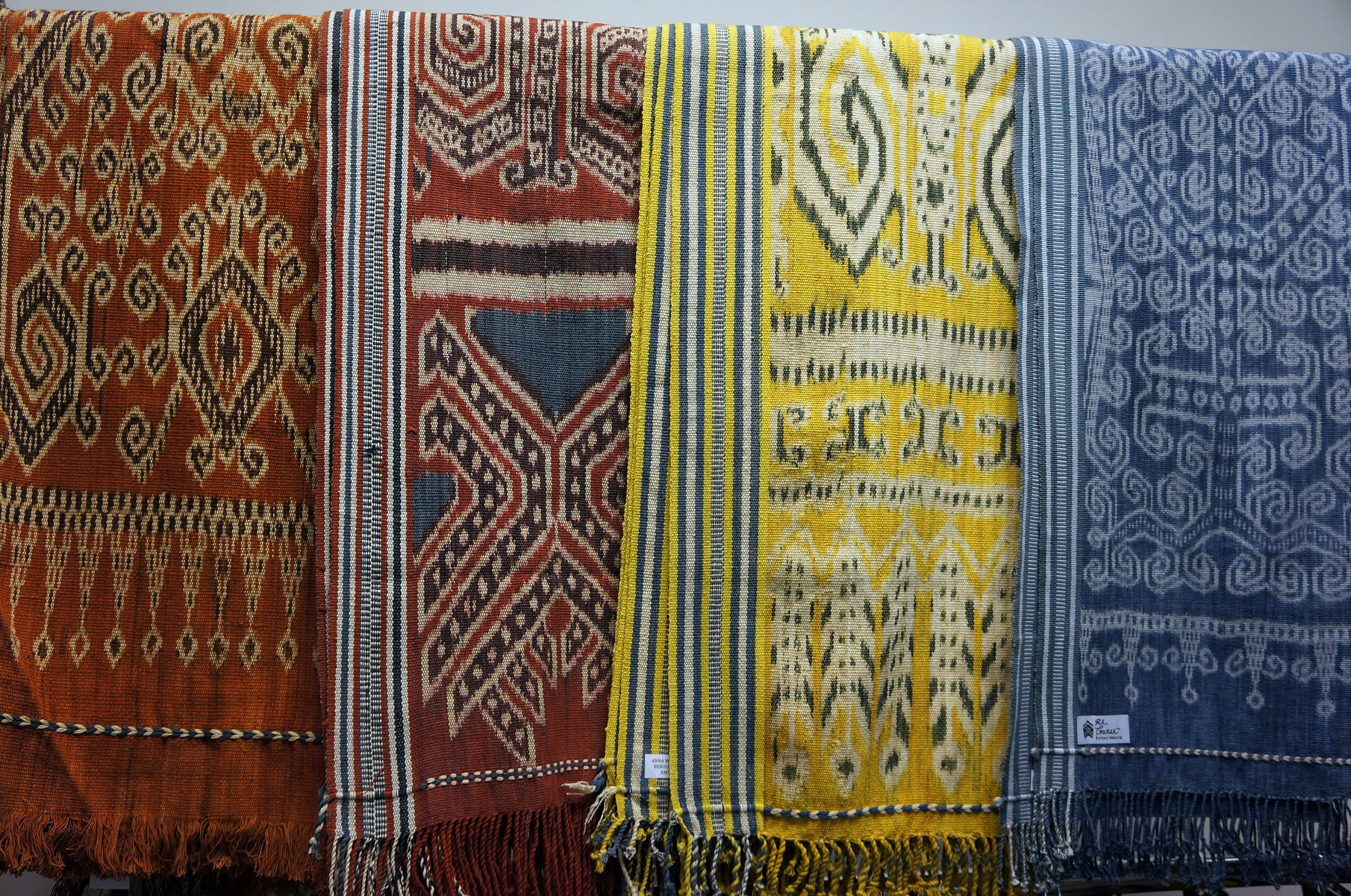
The work of Tompoq Topoh collective is one example of how innovation is helping to conserve and promote indigenous arts, as well as increase the income of artisans. "If we don't adapt, our crafts will become extinct," Ms Maznah said.
A little over 10 per cent of Malaysia's 30 million population are indigenous people, with the vast majority living in Sabah and Sarawak. Considered the oldest inhabitants of the land, they are divided into around 100 sub-groups with different languages and cultures, including craftwork.
Indigenous arts are enjoying a revived interest, thanks to social enterprises such as Gerai OA, Earth Heir, Society Atelier Sarawak and individuals who have helped paved the path to a wider market.
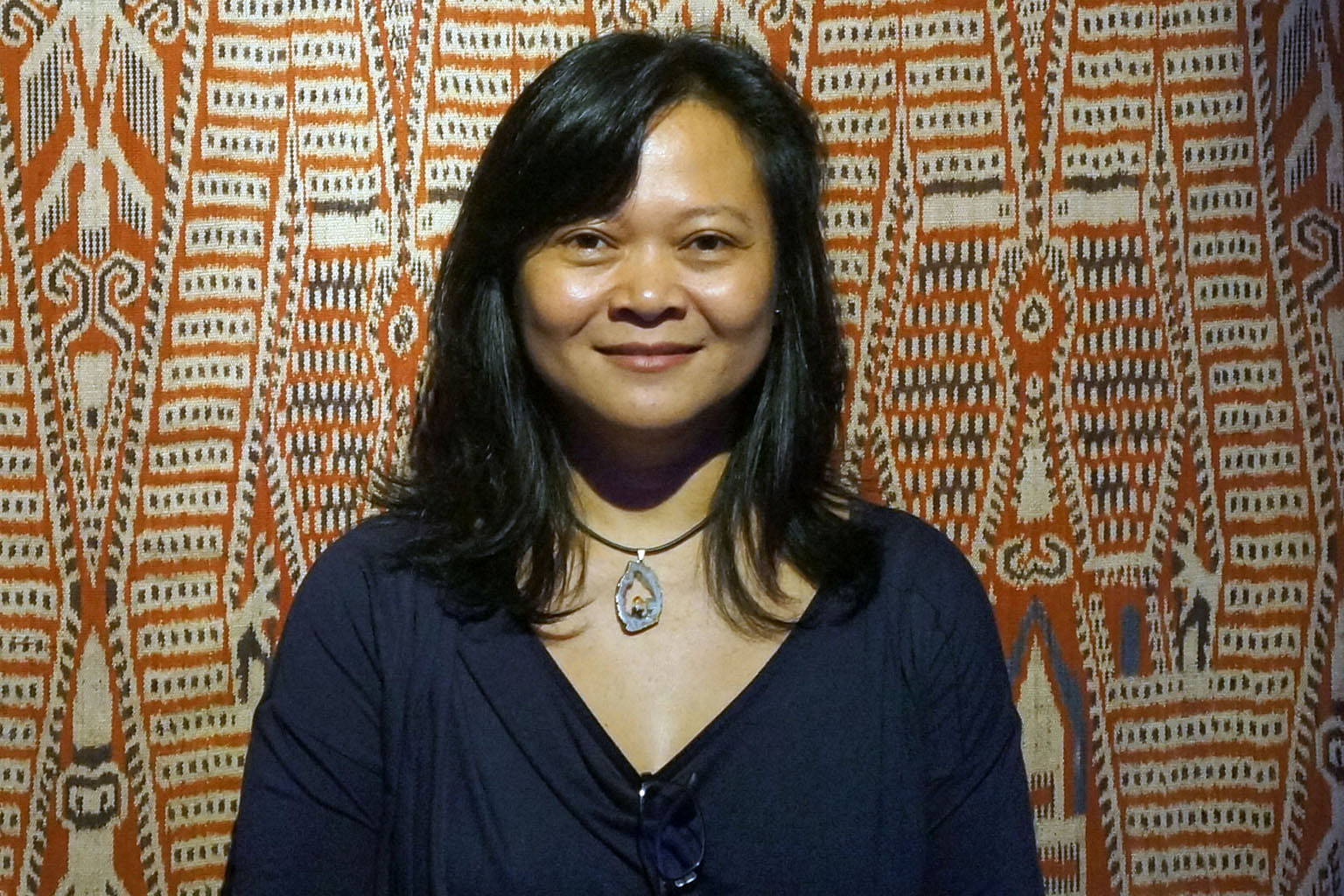
One customer, Ms Cheryl Tan, has become an avid buyer of crafts after she chanced upon Gerai OA on social media about a year ago. She likes the products not just for their beauty but also because each item is individually made and the money returns to the community.
"It's also my way of supporting artisans and preserving the arts," she said.
These enterprises help to market and promote indigenous crafts, as well as work with craftsmen to update their products for a contemporary appeal. Thus, while the crafts are still made with age-old techniques and completely by hand, they have now evolved into new shapes and colours to suit more current tastes.
UPDATING TRADITION
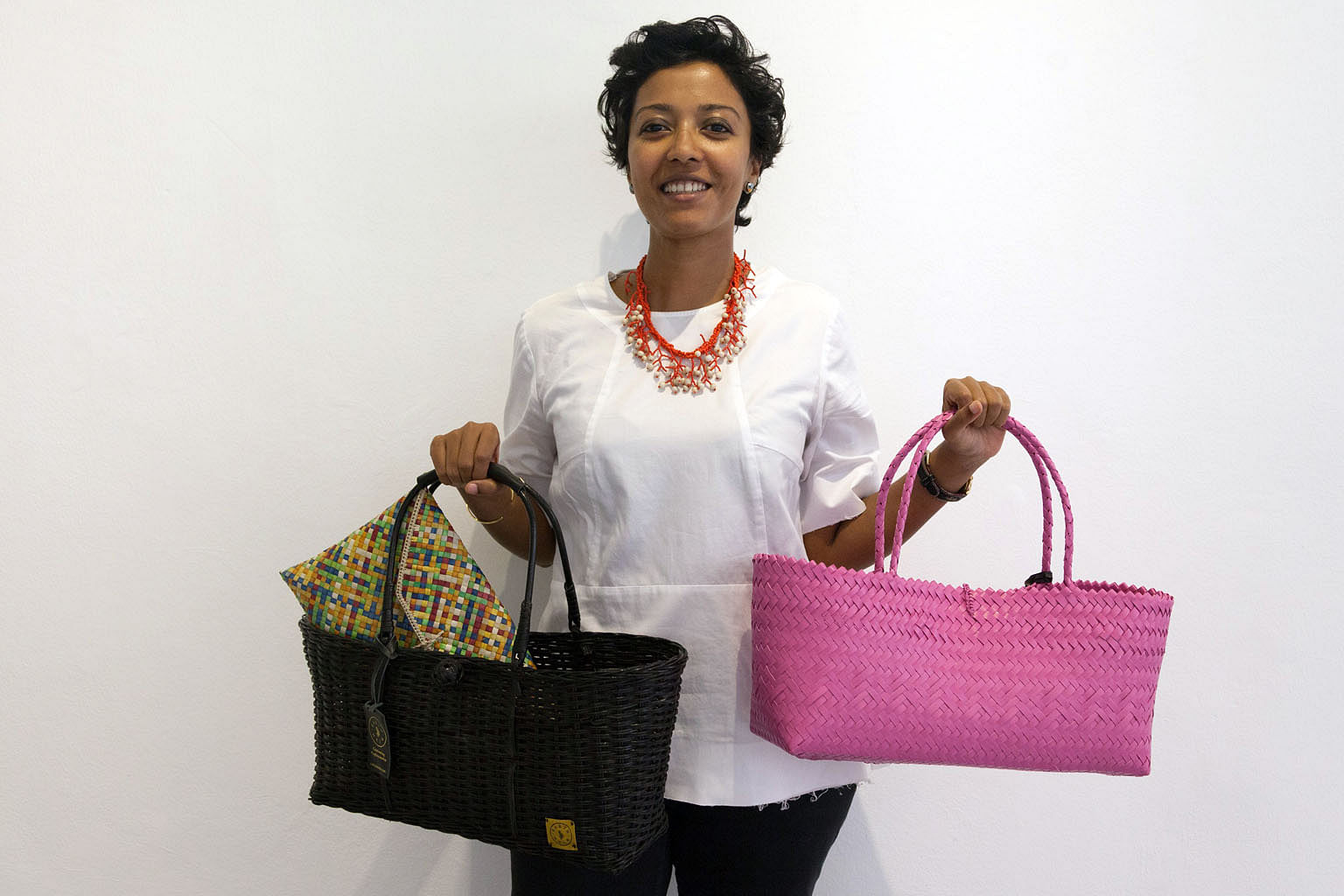
The most visible innovation is in the colour palette of the crafts. Gone are the clashing primary colours that used to be the hallmark of local crafts; the new chic products tend to sport more natural hues or pastel shades.
Take, for instance, the tie-dyed textiles called pua kumbu made by weavers of Sarawak's Iban tribe. The textiles are magnificent for their highly intricate designs but they used to come only in sombre mud brown and dark red colours.
Now the textiles are also infused with fresher colours like blues and yellows, thanks to advice from Dr Welyne Jehom, an anthropologist from University Malaya who works with weavers in a remote Sarawak village reachable only by river. She said the textiles are still coloured with natural dyes obtained from the rainforest. But instead of dark colours, she suggested that the weavers use more of the yellows and blues that were traditionally used only as highlights in a predominantly brown pattern.
The updated textiles were an immediate hit. "The blue and white patterns, especially, are selling like hot cakes," said Dr Welyne.
Besides their colours, the shapes of crafts have also evolved to fit modern needs. For instance, the Mah Meri women now make much bigger betelnut pouches, but not for holding betelnuts, since fewer people chew them now, but to fit the expanding girth of smartphones.
And, at the suggestion of Ms Reita, the weavers enthusiastically used bottles and hammers to flatten the woven straps of betelnut pouches to fit them between the pages of a book. The adapted bookmarks are now a top seller at Gerai OA for their beautiful colours.
Besides new colours and shapes, some artisans have also turned to non-traditional materials such as plastic strips to replace natural material like rattan which has become hard to find due to deforestation. With the same technique used to weave farm baskets, these plastic straps are now woven into modern beach bags and handbags.
Ms Sasibai Kimis, founder of Earth Heir, a fair trade craft social enterprise, said the bags are hugely popular in the urban market for their sleek finish that complements the traditional weaving technique.
She works closely with Nelly, a Kenyah weaver in Sarawak, to come up with new shapes and finishes for her range of Nelly bags.
"The popularity of Nelly's bags has helped her finance a move to a bigger house, and support her children in school. That's fantastic, that's what we work for," she said.
Promoting innovation in traditional crafts, however, comes with a raft of delicate ethical considerations.
RETAINING HERITAGE
Ms Sasibai said she is always mindful of the need to strike a balance between retaining the soul and heritage of the craft and making it attractive to the urban consumer. The crafts should not lose that unique quality that makes them a recognisable heritage of the indigenous people of Malaysia.
"It can sometimes feel like a colonialist imposing ideas on artisans who have been making crafts for generations. It's their heritage, and they are the masters of it," she said. She noted that some academics prefer crafts to be preserved exactly as they are. Yet, such crafts - although exquisite - are often old-fashioned and expensive. They are thus limited to a very small market populated only by museums or collectors.
But occasional commissions aren't enough for craftsmen to survive. Many thus resort to making cheap and gaudy souvenirs for the mass tourist market. "We need to find a balance between preserving heritage and the survival of the craft," said Ms Sasibai.
In her enterprise with the Iban weavers, Dr Welyne tries to strike this balance by refraining from making too many suggestions to the textile weavers to avoid curtailing their creativity.
"I'd tell the weavers that I want a textile in blue and white, or with a bird motif. Or I'd tell them that the pattern should be symmetrical and not overcrowded," she said.
"That's all. The women then come up with the designs."
This has worked well as the Iban women have come up with magnificent unique pieces which have been flying off the shelves as scarves or decorative set pieces.
As importantly, Dr Welyne strives to ensure that these crafts do not end up as just another product in the crowded consumer market, losing their meaning along the way. For instance, she makes sure that the old Iban beliefs about the pua kumbu textiles are respected. The pua kumbu was once regarded as sacred because the design was believed to appear only in the dreams of selected weavers. As such, the textiles were not made into clothing, which was considered prosaic. "Today, however, many of the weavers have left that tradition," said Dr Welyne. "Their designs are flexible, without the element of dreams."
She also recently organised a well-received pua kumbu exhibition at University Malaya, using computer technology to tell the story and myths of this textile that is still made entirely by hand.
Handicraft, more than just consumer products, is a good way to engage the wider community who are never going to read academic tomes on indigenous heritage, she said. It is an easy way for people to get to know the nation's indigenous people and their way of life.
And as more people come to appreciate the crafts, it has helped tremendously to conserve intangible cultural heritage, spurred innovation and also brought a much-welcomed new source of income for artisans.
Malaysian crafts are finally enjoying a long-overdue revival.
